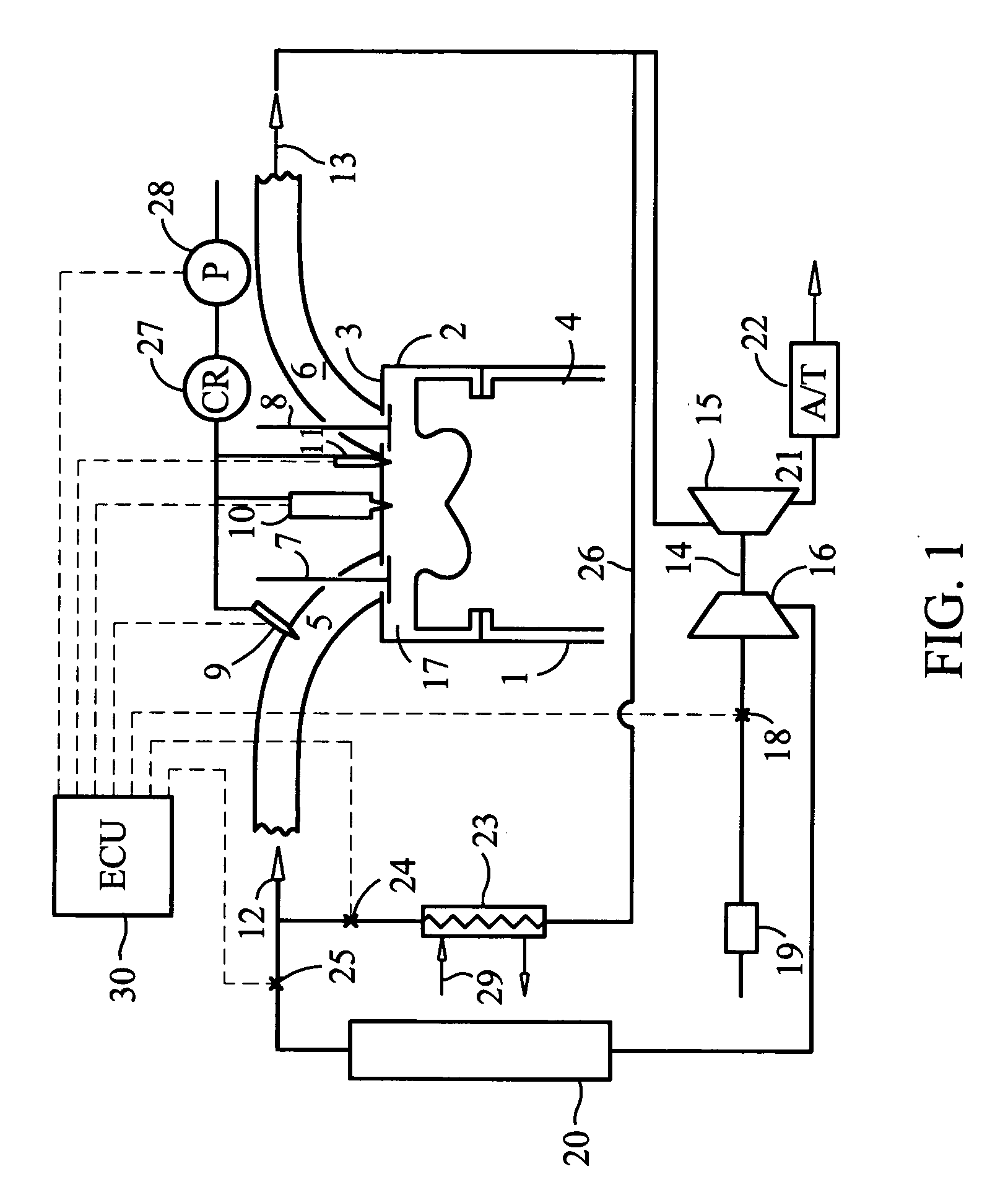Active radical initiator for internal combustion engines
a technology of active radicals and internal combustion engines, which is applied in the direction of machines/engines, mechanical equipment, electric control, etc., can solve the problems of increased nitric oxide and particulate matter emissions, start-ability, specific power output, poor fuel economy and drive-ability,
- Summary
- Abstract
- Description
- Claims
- Application Information
AI Technical Summary
Benefits of technology
Problems solved by technology
Method used
Image
Examples
Embodiment Construction
[0025] In one embodiment, the invention separates the high temperature combustion chemical reaction of the main fuel charge from the low temperature pre-ignition chemical reaction process. This is done by the use of an active radical initiator (ARI), in conjunction with a relatively low compression temperature and / or very lean fuel air mixture inside the main combustion chamber.
[0026] The pre-ignition chemical reaction process of the main charge is made irrelevant by operating the main fuel charge at conditions too lean and / or too cold to ignite, such that without the onset of initiator's multiple active radical plumes of the present invention, the ignition of main charge will not generally occur. A lean fuel air mixture is generally required for a high cycle efficiency and very low emissions engine.
[0027]FIG. 1 depicts schematically and in cross section a portion of an internal combustion engine pertaining to one embodiment of the present invention. The internal combustion engine...
PUM
 Login to View More
Login to View More Abstract
Description
Claims
Application Information
 Login to View More
Login to View More - R&D
- Intellectual Property
- Life Sciences
- Materials
- Tech Scout
- Unparalleled Data Quality
- Higher Quality Content
- 60% Fewer Hallucinations
Browse by: Latest US Patents, China's latest patents, Technical Efficacy Thesaurus, Application Domain, Technology Topic, Popular Technical Reports.
© 2025 PatSnap. All rights reserved.Legal|Privacy policy|Modern Slavery Act Transparency Statement|Sitemap|About US| Contact US: help@patsnap.com



